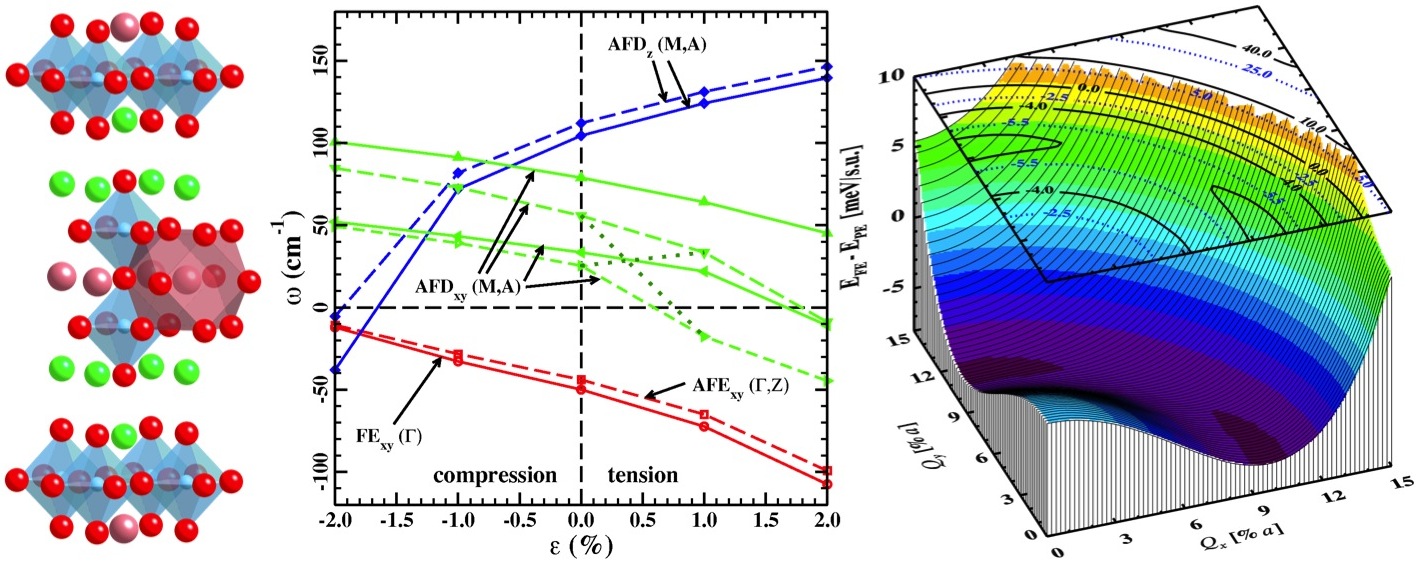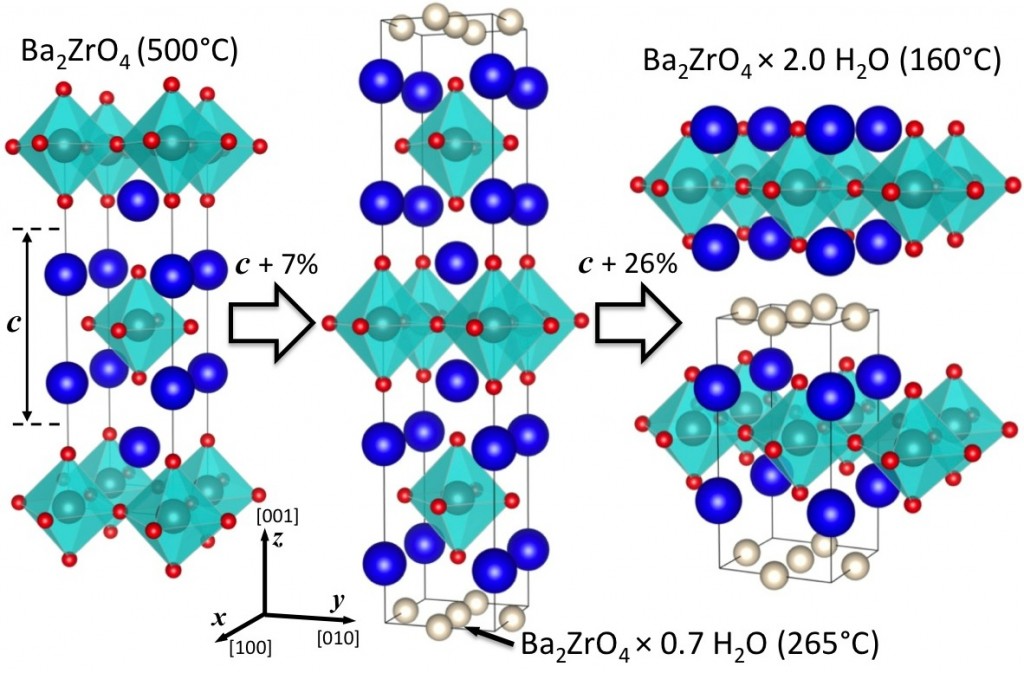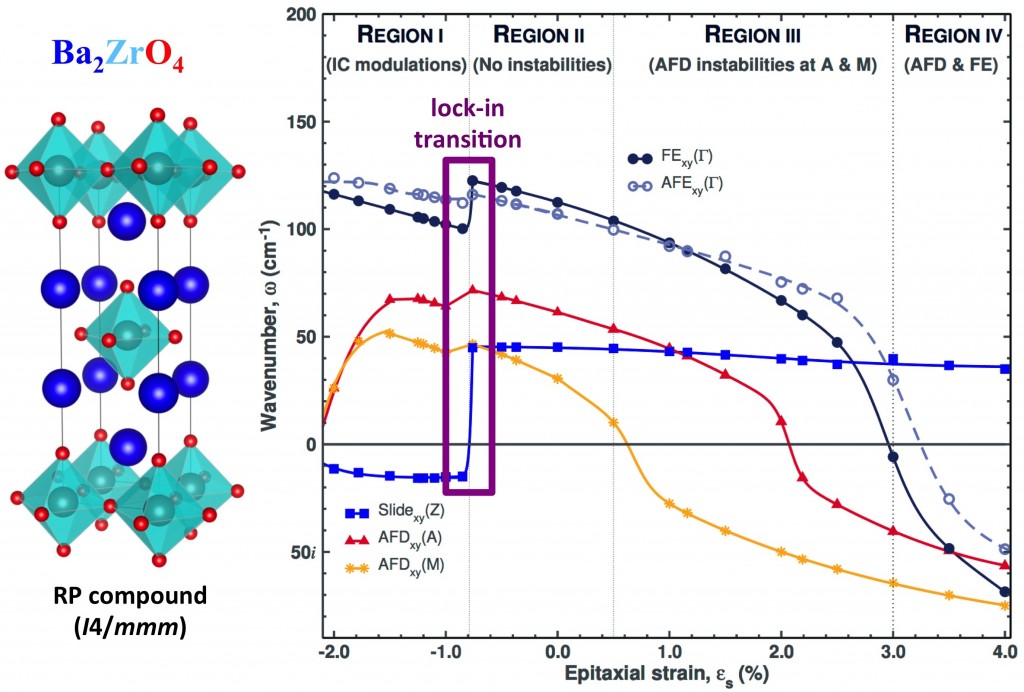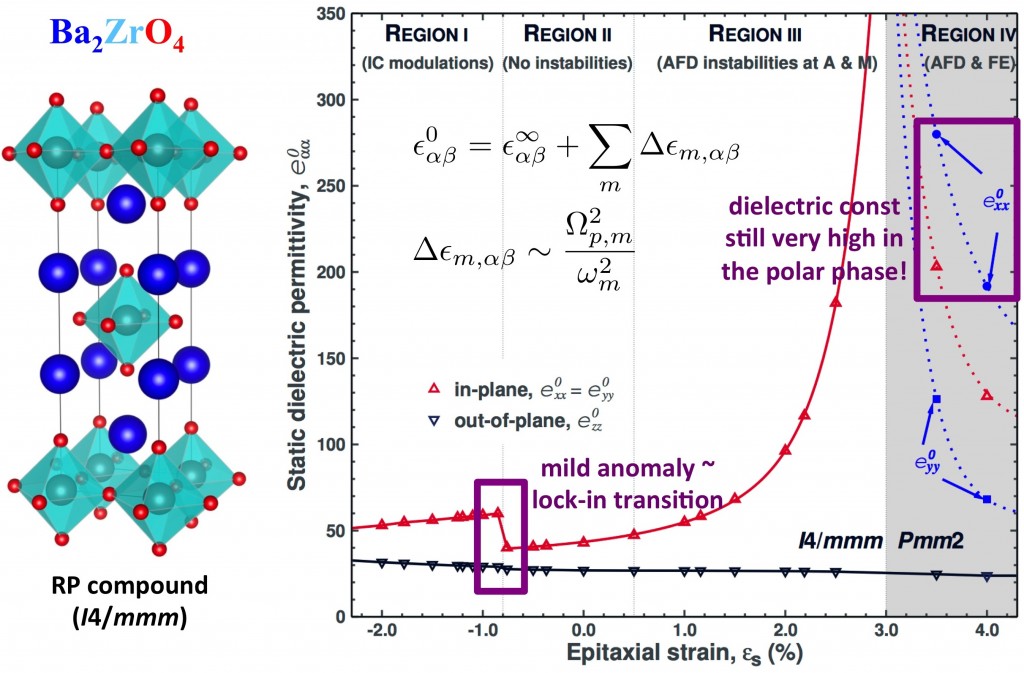Serge’s recent presentation about functional layered oxides by design at the 2015 APS March meeting is available here. |
2010: First principles simulations predict a new functionality in a layered perovskite oxide with constrained polarizationWith the help of first-principles-based computational techniques, we predicted that Goldstone-like states (i.e., collective, close to zero frequency excitations of the system requiring practically no consumption of energy) can be artificially induced in a layered-perovskite ferroelectric compound. Through precise control of the compound’s structure and composition its electric polarization can be constrained within the individual layer planes. This confinement then gives rise to easy, Goldstone-like rotations of polarization within these planes — in a similar fashion to other well-known perovskite materials with morphotropic phase boundaries. Such phason excitations had been shown to exist in ferroelectric liquid crystals (which actually have very weak polarization) and certain magnetic structures (as spin waves) but never before in a “hard,” strongly polar material. In the paper cited below, we predicted that in a layered Ruddlesden-Popper-type oxide PbSr2Ti2O7 the presence of such excitations can lead to an emergence of a variety of useful physical properties that include large, tunable dielectric constants, close to anomalous light absorption and an ability to easily form vortex polar states in a nanodot geometry. Unusual functionalities of polar-phason compounds, like this one, can be exploited for improved energy generation, storage and conversion, opening up new avenues for disruptive advances in electroactive materials design. After our first paper came out in 2010, we have also elucidated the electronic-structure underpinnings of the Goldstone-like states in the perovskite-oxide layers by examining the properties of individual atomic planes and tracking their evolution as these planes are stacked together. In contrast with ferroelectric PbTiO3 that has no Goldstone-like excitations, their appearance in the layered structures can be attributed to the breakdown of the network of cooperative pseudo Jahn-Teller distortions on the Ti4+ sites, which leaves the Pb2+ site network in the PbO atomic planes as the primary source of the polar instability. We found that both the lone electron pair activity of the Pb2+ sites and the presence of the bracing SrO planes are paramount for the emergence of the Goldstone-like excitations, while the Ruddlesden-Popper structure, in principle, is not. This project was supported by the U.S. Department of Energy, Office of Science, Office of Basic Energy Sciences under contract No. DE-AC02-06CH11357. Citation Information: S. M. Nakhmanson and I. Naumov, Goldstone-like states in a layered perovskite with frustrated polarization: a first-principles investigation of PbSr2Ti2O7, Phys. Rev. Lett. 104, 097601 (2010). |
 |
| Figure: Properties of a polar-phason material PbSr2Ti2O7: (left) Structure. (center) Soft-mode frequencies ω at Γ and Brillouin-zone boundary k-points (marked in brackets) vs epitaxial strain ε = α0/α – 1, where α is the the in-plane lattice constant. Subscripts indicate the sense of axial [λ] or planar [λμ] ionic motion for the ferroelectric (FE) and antiferroelectric (AFE), and single [λ] or a set [λ,μ] of rotational axes for the antiferrodistortive (AFD) modes; λ,μ = x, y, z. (right) Energy landscape for the frozen-in FExy distortion at ε = 0%. Qx and Qy are the amplitudes [proportional to polarization P] of the modes’ eigenvectors polarized along the x and y axes. |
2015: A hint of Goldstone-like polar excitation predicted in a layered oxide with no electron lone pairs.
|
 |
| Reconstruction of a phase transition sequence of the Ruddlesden-Popper Ba2ZrO4 compound under loading with water molecules, following the results of Shpanchenko et al (1993). Here possible locations of water molecules are indicated by ivory balls. The change of the lattice parameter c during the transitions is indicated above the arrows connecting different phases. |
 |
| A tentative phase diagram for “unloaded” Ba2ZrO4 under changing epitaxial strain εs. This diagram is established through analysis of soft vibrational modes frequencies ω at Γ and various Brillouin Zone boundary q points as functions of εs. |
 |
| In- and out-of-plane components of the static dielectric permittivity tensor computed for the RP Ba2ZrO4 structure with respect to varying biaxial strain εs. For all compressions and for tensions of less than 3.0%, the dielectric tensors are computed for the nonpolar I4/mmm configuration, while for larger tensions they are computed for the polar Pmm2 configuration (where xx and yy components of the dielectric permittivity tensor are no longer equal by symmetry). |